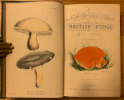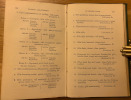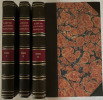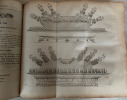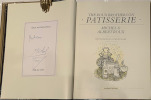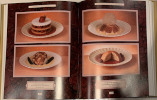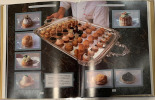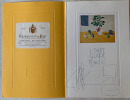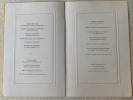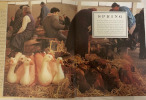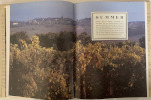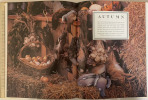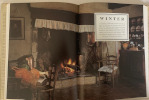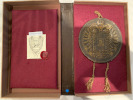Luncheon for Her Majesty the Queen and Prince Philip, Duke of Edinburgh.
THE ROYAL BURGH OF INVERNESS (the coat of arms of Inverness). Visit of Her Majesty The Queen and His Royal Highness The Duke of Edinburgh. Luncheon In STATION HOTEL., INVERNESS On FRIDAY, 26th JUNE, 1964. Provost W. J. MACKAY Presiding.
177 x 113 mm. One sheet of cream-coloured cardboard folded in half, thereby creating 4 pages. Outside page - see above. Verso with 2 wines. 3rd page with menu. Back outside cover blank. Very slightly stained on first 3 pages. Housed and inserted in a marbled sleeve.
- This was the last leg of a three day visit by the Queen and Prince Phillip to the Scottish Highlands on 24th to 26th June, 1964. It included Caithness, Sutherland, Easter Ross and Inverness. I was a very young commis chef starting in the Pastry Department of the Station Hotel, Inverness. The Chef Patissier was a Spaniard called Jose who was a very good and patient teacher. There was another young commis pattisier like me, so a team of three. The sweet course on the menu was a very traditional Strawberries and Cream. I remember helping with small intricate Petit Fours; my first time seeing and making those exquisite mouthfuls. Another thing I remember hearing, that the Chef de Cuisine, an Italian called Mr Lyola, had been given a list of items to chose from that the Queen liked, to make a menu. (I should imagine that the menu had to be sent back to the Queen's tour organisers for approval). Part of the brief was to keep the menu simple. Chef Lyola, who was near to retirement age, had been the Chef de Cuisine at the Central Hotel in Glasgow and had been sent to Inverness to raise the standards. He was a very exacting boss, with a big reputation. We commis chefs were in awe of him and not a little afraid to become the focus of his ire for the slightest mistake. For the first course of 'Foie Gras a la Gelee de Porto', a French chef from the Central Hotel came for three days to prepare it. I remember also the excitement I felt in the kitchen at that time. None of the commis took time or days off. We just wanted to see and learn the new dishes, even though now, when I read the menu I'm surprised by its relative simplicity. I had the privilege many years later to be the Chef Poissonnier at Claridges Hotel in London. There was during the height of every season, eight high level diplomatic banquets, coordinated with the relative Embassy, and held for up to two hundred guests with the Queen attending each one. (most times with Heads of State as the Queen's main Guest). Those were much more sophisticated affairs, but the excitement of those did not compare to the awe and wonder of that first one in Inverness when I was just starting out.


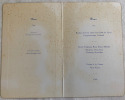

click on image to enlarge

Modern category
ref number:
11278 







